|
In this harmony tutorial, today I will teach you how to harmonize FRANCONIA hymn tune which in this case is sung to the words "Come, Join in Cana's Feast". I'll analyze and choose fitting chords which work for that beautiful hymn. Hope you will find it useful! If you need more help with hymn harmonisation, I recommend my Hymn Harmonization Workshop: https://secrets-of-organ-playing.myshopify.com/products/hymn-harmonization-workshop?_pos=1&_sid=194046a1d&_ss=r Join this channel to get access to perks such as custom weekly members-only tutorials and others: https://www.youtube.com/channel/UCO4K3_6QVJI_HlI5PCFQqtg/join We support Ukraine: https://www.blue-yellow.lt/en If you like what I do, you can buy me some coffee: https://www.buymeacoffee.com/organduo PayPal: https://PayPal.Me/VPinkevicius My Hauptwerk setup: https://www.organduo.lt/tools.html Total Organist - the most comprehensive organ training program online: https://www.organduo.lt/total-organist Secrets of Organ Playing - When You Practice, Miracles Happen! https://organduo.lt We use Organmaster Shoes. Use my link and get 5% off: https://organmastershoes.com/discount/VIDASPINKEVICIUS?rs_ref=BZt3wxA9 Listen to my organ playing on Spotify: https://open.spotify.com/artist/0ckKPIvTWucoN3CZwGodCO?si=YWy7_0HqRvaZwBcovL-RKg
Comments
In this harmony tutorial, today I will teach you how to harmonize SUSSEX CAROL hymn tune. I'll analyze and choose fitting chords which work for that beautiful hymn. Hope you will find it useful! If you need more help with hymn harmonisation, I recommend my Hymn Harmonization Workshop: https://secrets-of-organ-playing.myshopify.com/products/hymn-harmonization-workshop?_pos=1&_sid=194046a1d&_ss=r Join this channel to get access to perks such as custom weekly members-only tutorials and others: https://www.youtube.com/channel/UCO4K3_6QVJI_HlI5PCFQqtg/join We support Ukraine: https://www.blue-yellow.lt/en If you like what I do, you can buy me some coffee: https://www.buymeacoffee.com/organduo PayPal: https://PayPal.Me/VPinkevicius My Hauptwerk setup: https://www.organduo.lt/tools.html Total Organist - the most comprehensive organ training program online: https://www.organduo.lt/total-organist Secrets of Organ Playing - When You Practice, Miracles Happen! https://organduo.lt We use Organmaster Shoes. Use my link and get 5% off: https://organmastershoes.com/discount/VIDASPINKEVICIUS?rs_ref=BZt3wxA9 Listen to my organ playing on Spotify: https://open.spotify.com/artist/0ckKPIvTWucoN3CZwGodCO?si=YWy7_0HqRvaZwBcovL-RKg n this harmony tutorial, today I will teach you how to harmonize Come, Thou Long-Expected Jesus Advent hymn tune. We'll analyze and choose fitting chords which work for that beautiful mode. Hope you will find it useful! If you need more help with hymn harmonisation, I recommend my Hymn Harmonization Workshop: https://secrets-of-organ-playing.myshopify.com/products/hymn-harmonization-workshop?_pos=1&_sid=194046a1d&_ss=r Join this channel to get access to perks such as custom weekly members-only tutorials and others: https://www.youtube.com/channel/UCO4K3_6QVJI_HlI5PCFQqtg/join We support Ukraine: https://www.blue-yellow.lt/en If you like what I do, you can buy me some coffee: https://www.buymeacoffee.com/organduo PayPal: https://PayPal.Me/VPinkevicius My Hauptwerk setup: https://www.organduo.lt/tools.html Total Organist - the most comprehensive organ training program online: https://www.organduo.lt/total-organist Secrets of Organ Playing - When You Practice, Miracles Happen! https://organduo.lt We use Organmaster Shoes. Use my link and get 5% off: https://organmastershoes.com/discount/VIDASPINKEVICIUS?rs_ref=BZt3wxA9 Listen to my organ playing on Spotify: https://open.spotify.com/artist/0ckKPIvTWucoN3CZwGodCO?si=YWy7_0HqRvaZwBcovL-RKg It's Saturday again and it's time for another harmony tutorial. Today I will teach you how to harmonize Advent hymn tune Wachet auf in C major using simple chords (I, IV, V, ii, iii, vi, their inversions and V7) for 4 voices. Whenever appropriate I will modulate to related keys for more color. Hope you will enjoy it! It's Saturday again and it's time for another harmony tutorial. Today I will teach you how to harmonize Advent hymn tune Wachet auf in C major using simple chords (I, IV, V, ii, iii, vi, their inversions and V7) for 4 voices. Whenever appropriate I will modulate to related keys for more color. Hope you will enjoy it! If you need more help with hymn harmonisation, I recommend my Hymn Harmonization Workshop: https://secrets-of-organ-playing.myshopify.com/products/hymn-harmonization-workshop?_pos=1&_sid=d99056c21&_ss=r Join this channel to get access to perks such as custom weekly members-only tutorials and others: https://www.youtube.com/channel/UCO4K3_6QVJI_HlI5PCFQqtg/join We support Ukraine: https://www.blue-yellow.lt/en If you like what I do, you can buy me some coffee: https://www.buymeacoffee.com/organduo PayPal: https://PayPal.Me/VPinkevicius My Hauptwerk setup: https://www.organduo.lt/tools.html Total Organist - the most comprehensive organ training program online: https://www.organduo.lt/total-organist Secrets of Organ Playing - When You Practice, Miracles Happen! https://organduo.lt Listen to my organ playing on Spotify: https://open.spotify.com/artist/0ckKPIvTWucoN3CZwGodCO?si=YWy7_0HqRvaZwBcovL-RKg In preparation for my joint recital with James Flores last weekend, I sat down on the organ bench and harmonised the famous chorale tune Ein feste Burg ist unser Gott in 8 different ways using I, IV and V chords only:
1. In the soprano without pedals 2. In the soprano with pedals 3. In the soprano with solo stop 4. In the tenor with solo stop 5. In the soprano on the pedals (4' stop) 6. In the tenor on the pedals (8' stop) 7. In the right foot with double pedals only 8. In the right foot with double pedals and manual parts Thank you for your support! You get early access and I get to keep going. Get early access: https://www.buymeacoffee.com/organduo Today I'm going to show you how to harmonize Nun komm, der Heiden Heiland chorale tune in 21 ways using 2, 3 and 4 parts. Hope you will enjoy it! I will be playing Velesovo sample set by Sonus Paradisi of Hauptwerk VPO.
Transposition for Organists (Level 1): https://secrets-of-organ-playing.mysh... Organ Verset Improvisation Master Course: https://secrets-of-organ-playing.mysh... Organ Hymn Improvisation (Level 1): https://secrets-of-organ-playing.mysh... Hymn Harmonization Workshop: https://secrets-of-organ-playing.mysh... If you like my music making, you can support me on Patreon and get free organ CD's at https://patreon.com/secretsoforganpla... Buy me coffee: https://www.paypal.me/VPinkevicius My Hauptwerk setup: https://www.organduo.lt/tools.html Total Organist - the most comprehensive organ training program online: https://www.organduo.lt/total-organist Secrets of Organ Playing - When You Practice, Miracles Happen! https://organduo.lt Today I'm going to harmonize in 22 ways Lob sei dem allmachtigen Gott chorale tune. Hope you will enjoy it! I will be playing Velesovo sample set by Sonus Paradisi of Hauptwerk VPO.
Transposition for Organists (Level 1): https://secrets-of-organ-playing.mysh... Organ Verset Improvisation Master Course: https://secrets-of-organ-playing.mysh... Organ Hymn Improvisation (Level 1): https://secrets-of-organ-playing.mysh... Hymn Harmonization Workshop: https://secrets-of-organ-playing.mysh... If you like my music making, you can support me on Patreon and get free organ CD's at https://patreon.com/secretsoforganpla... Buy me coffee: https://www.paypal.me/VPinkevicius My Hauptwerk setup: https://www.organduo.lt/tools.html Total Organist - the most comprehensive organ training program online: https://www.organduo.lt/total-organist Secrets of Organ Playing - When You Practice, Miracles Happen! https://organduo.lt
Vidas: Hi guys, this is Vidas.
Ausra: And Ausra. V: Let’s start Episode 281 of Secrets of Organ Playing podcast. Today’s question was sent by Spencer. And he asks for tutorials on playing varied hymn harmonies. What do you imagine, Ausra, this could be? A: Well, it always surprises me when people might think that there is one easy solution for such a complex issue as playing various hymn harmonizations. What do you think about that, Vidas? Is it easy or not, to do? V: For me it’s easy--but I’ve been doing it for 20 years. So guys, it’s difficult for the first 20 years, but after that it’s easy! But we shouldn’t discourage people like that. Are there any shortcuts on learning how to harmonize hymns? I don’t think so. A: Well...some of them might be, but you still need to learn what the keyboard harmony in general is. V: Mhm. So your first step should probably be to get familiar with the basic chords: tonic, subdominant, and dominant. And their inversions: the 6 chord and the 64 chord. What else? Dominant 7th chord, maybe? A: Sure. And then all the other chords, too! V: When you say all the other chords, it’s too much, right? But you could actually harmonize--with tonic, subdominant, and dominant--any type of hymn; because they usually are written in one key. What about if the hymn modulates in the middle? Can you use tonic, subdominant, and dominant then? A: Well...not exactly. Because you know, when you modulate, you need to show more dissonant chords. V: But if you treat this modulation as the new key, right--constant key excerpt or episode--and then you find out what are the tonic, subdominant, and dominant chords of that key, of the new key, and only use those 3 chords in that passage, and then come back-- A: Well, in very simple modulation, you can do that. V: Mhm. A: But really, it doesn’t always work. Usually after a common chord, you need to show some specific dissonant chord of the new key. V: Mhm. A: And you usually don’t use simple subdominant in that case. V: Mhm. A: You need to add something more sophisticated. V: So perhaps Spencer could benefit from our courses on harmonization. A: Sure. V: Like Harmony for Organists Level 1; Hymn Harmonization Workshop; your lessons with Victoria… A: Yes, and my sequences and cadences and modulations on YouTube. If you would play them all, you can definitely play various hymn harmonies. V: Mhm, mhm. A: It will give you some basic ideas about keyboard harmony. V: So if you were a beginner--it’s obviously very difficult for us to imagine that we are a beginner, but--if we are pretending, for a second, that we don’t know anything, like with a beginner’s mind--if you would want to start learning music theory and chords today, what would be your first step? Obviously those chords, right? A: Sure. V: What would you do today with them, on the keyboard--on the organ? You wouldn’t jump in and harmonize the hymn with those 3 chords, right away? A: Probably not, but you know what I would do? V: Mhm? A: If I would have to start from scratch, I would try to analyze what’s written. Let’s say, take a hymnal, and analyze a few hymns. I would see how the composer uses the chords; how they are related in between. V: What’s the voice leading… A: That’s right. V: Mhm. A: And maybe understanding and analyzing those written hymns would help me to comprehend… V: What are the forbidden intervals, what are some of the obvious rules of voice leading--right? A: Well, it’s actually pretty simple, you know, if you would only follow those rules; but when you start to do it practically, then you will find out that the easier the rule is, the harder it is to apply in practice, actually. V: Really? A: Really. V: I didn’t think about that before. Why? A: Well, even young Bach used some parallel fifths in his famous works. He never did it later on in life. But actually, those simple rules, like I mentioned a few-- V: Mhm. A: You need to avoid all parallel fifths and octaves. YOu need to avoid augmented intervals in any voice; well then, you need avoid 2 big leaps in a row facing the same direction, because if you do a leap, then your voice needs to change direction. V: Mhm. A: That’s how music works. Let’s say you cannot do 2 fifths in a row. V: Mhm. A: Going up or going down. V: One voice has to jump a perfect 5th, and then go down--let’s say a major 3rd. A: That’s right. V: Or perfect 4th. A: That’s right. And then of course, you need, in hymn harmonization, to avoid voice crossing. V: Mhm. A: It means, you know, that soprano always stays above all other 3 voices; and you know, alto then is below soprano, and tenor below alto; and you know, bass is the lowest voice. V: Mhm. A: And you avoid crossing them. V: So, alto should be between soprano and tenor, and tenor should be between bass and alto. A: Yes. V: Always. A: Yes, and then of course you need to look at the accidentals. Let’s say if you have a dominant chord in a minor key, you need to raise the 7th scale degree. And sometimes people do that, let’s say, in the soprano, which is a given, and then use the seventh scale degree in the bass, for example, and forget to add that seventh scale degree, raised. V: Mhm. A: And it sounds really bad. V: That’s harmonic minor. A: That’s right, the same in major if you use harmonic--harmonic major with the 6th scale degree lowered. You need then to do it consistently. V: But that’s rare in hymns. A: But yes, in hymns that’s rare; but not a dominant in a minor with the seventh scale degree raised. It’s pretty common. V: Mhm. And that means that the dominant chord is always major. A: That’s right. And another major mistake that you can make in conventional harmony: 2 subdominant key chords after a dominant key. I think this is the worst mistake that you can do. V: Why is that? A: Because after a dominant chord, it has that seventh scale degree, so it sounds very unstable. And after a dominant chord, you need to use either another dominant chord, or you need to resolve it to a tonic chord. But not to use subdominant, which has not such a big tension as a dominant. V: Mhm. Leading tone, or raised 7th scale degree, is always the least stable degree in a scale. A: That’s right. So after, you know...In harmony, usually if you build up tension, then we have to release it. That’s how it works, normally. V: Mhm. So after subdominant, after less tension, you could get more tension with playing a dominant chord. A: That’s right. V: But if you do it the other way around, then the tension gets less...But the chord is not resolved, so it’s strange. A: Yes, it is. V: Tonic after the dominant sounds good. But subdominant after the dominant sounds more...jazzlike. A: That’s right. And you don’t want that in hymn playing, probably. V: Probably, mhm. So that’s our general ideas for Spencer, and everybody who is interested in varied hymn harmonies, to start their own harmonization journey. And check out our courses on that; that’s a really big help. If that’s what our students tell us are true. And they’re of course telling the truth! Haha. Thank you guys for sending us those questions. Please keep writing more--your challenges and dreams about organ playing, what you want to achieve in 6 months, in 3 months, and what’s stopping you from achieving your dream. Even in the short term--maybe in a month, if you have a challenge coming up. Maybe like a public performance. We could try to help you get unstuck. Right, Ausra? A: Yes, that’s right. V: And remember, when you practice… A: Miracles happen.
This blog/podcast is supported by Total Organist - the most comprehensive organ training program online. It has hundreds of courses, coaching and practice materials for every area of organ playing, thousands of instructional videos and PDF's. You will NOT find more value anywhere else online...
Total Organist helps you to master any piece, perfect your technique, develop your sight-reading skills, and improvise or compose your own music and much much more... Sign up and begin your training today. And of course, you will get the 1st month free too. You can cancel anytime. Join 80+ other Total Organist students here
Vidas: Let’s start Episode 92 of #AskVidasAndAusra podcast. And today’s question was sent by John; and he asks how to create alternate harmonizations and descants for the last verse of the hymn. Basically, this is the question: how to reharmonize any type of melody, yes, Ausra?
Ausra: Yes, I believe so. Vidas: So, here’s the situation as I understand it. You have a 4-part setting of a hymn from the hymnal; you normally play from the sheet, from this setting, playing four parts, maybe with pedals, maybe without pedals; and then when the last verse comes, you want to be able to play something else based on that melody, right? Something with different harmony. So Ausra, what would you do in this situation? Ausra: Well, to change the harmony completely might be a little bit of a dangerous thing for the congregation. You could do that, probably, yes. But in order to reharmonize, you have to know what is written in your original hymn. Vidas: Mhm. Ausra: And then based on that, you could reharmonize it. But definitely, there are various ways to harmonize the same melody. You can use different chords. Or you can do a different texture, too. Vidas: Let’s talk about adding different chords, first. Wouldn’t it be easier to simply play from the sheet, looking at the solo melody, without the given harmonization, and add your chords--add your harmonization on top of that solo melody? Ausra: Yes, that’s a possibility, definitely. Vidas: At home, you would write down the melody on a separate sheet of paper, the soprano line; and when the last verse of the hymn comes, you start playing not from the hymnal, but from that sheet. Ausra: That’s a possibility, definitely, yes. Vidas: Right? And you can add whatever you want to. Ausra: Well, yes, but it should fit the melody, too. So you still need to follow some rules. Vidas: What is Rule #1 here? What’s forbidden, maybe? What would you have to avoid, when harmonizing the soprano line? Ausra: Well, probably, the basic things are: to avoid fifths and octaves; to avoid augmented intervals, jumps of augmented intervals; then, to avoid leading all four voices to one side, either moving up or down. Vidas: What is the number one solution to all these problems? Ausra: Well, you would have to...Well, if you would write the harmony down, if you harmonize it, then you could check it for those mistakes. Vidas: What I mean is, when you harmonize the soprano line, what would you do with the bass, normally? Do you go in the same direction, or-- Ausra: Well, no, actually, usually the bass moves in the opposite direction compared to the soprano. Vidas: Why? Ausra: Well, then it creates a nice contrary motion. But sometimes, the soprano and bass can move in the same direction, but maybe one of the inner voices can just stay in the same spot. Vidas: Yes. So generally what you mean is, the easiest thing to watch out for is contrary motion between the outer voices, soprano and bass. Ausra: Yes, yes. Vidas: But sometimes, maybe the inner voices can have contrary motion with the soprano as well. And that’s how you avoid those forbidden intervals, right? Ausra: Yes, that’s right. Vidas: And...Okay. What else should John know when he wants to reharmonize the melody? Maybe how to discover the chords from each note of the melody. Let’s say the melody is in C Major, and you see the note C on the page, right? What kind of chord would fit on that? Ausra: Well, tonic chord; and then sixth scale degree; root position chord; and of course subdominant chord; so basically, you have some choices. Vidas: Tonic would be C-E-G, sixth scale degree chord would be what, A-C-E, and subdominant would be F-A-C. Ausra: Yes. Vidas: You see, in each of these 3 chords, there is the note C present; therefore, it fits nicely. Ausra: And the third scale degree chord, too, has this; but it’s maybe not often used, but it could also be used, in some cases. And of course you could not use chords in root position--not only root position. Vidas: Mhm. Ausra: You could use inversions, too. Vidas: First inversion, normally. Ausra: Yes, first inversion, yes. Vidas: What if I have the note D in the melody? Ausra: Well, it could be a dominant. Vidas: G-B-D? Ausra: That’s right. Vidas: What else? Ausra: Seventh scale degree, first inversion. Vidas: D-F-B. Ausra: Of course you could use dominant inversions, or dominant seventh chord, and inversions of it; so it’s G-B-D-F and its inversions. Or the seventh scale degree, seventh chord-- Vidas: B-D... Ausra: F and A. Vidas: F-A. Or just a second scale degree root position chord. Ausra: That’s right. Vidas: Or first inversion. Ausra: Well, yes, but be careful with that chord--it’s not so often used in root position, especially in the minor keys. Vidas: Uh-huh. Ausra: In major keys it’s okay, but in minor keys it’s a diminished chord, so it’s not often used-- Vidas: Oh, it’s forbidden. Ausra: Yes. You could use inversions of it, mostly the first inversion. Vidas: Mhm, that’s right. And so on, right? Ausra: Yes. Vidas: You have to think. You don’t have to know, mentally, all the names of these chords, but you can discover them by building them up from the bass, right? From the note E, you would discover E-G-B, when E is in the lowest position; or in the middle, it would be a tonic chord, C-E-G, right? E is present. Or, the sixth scale degree, when it’s on top: A-C-E, right? Ausra: Yes. Vidas: So people can really experiment, I think, with these chords and melodic notes, right? And see what fits. And what color it creates--each particular chord--because not every chord fits nicely with the next one, right? Ausra: That’s true. Vidas: What are the 3 main functions that people should be aware of? Ausra: Well, tonic, subdominant, and dominant. And what you have to know is that the tonic may appear after each of these functions. Vidas: Mhm. Ausra: Basically. It’s the main function. And subdominant may come before tonic, and go after tonic, and then after subdominant, dominant may come; but after dominant chord, you never use the subdominant chord. Vidas: Unless there are some exceptions, right? Ausra: Yes, there are some exceptions, but… Vidas: It’s too advanced…[? 9:07] Ausra: But they are very rare, and you need to know how to use them. Vidas: Mhm. Ausra: So basically after a dominant chord, you use either another dominant chord, or you just resolve it to a tonic chord. Vidas: Right. Right, so guys, if you want to re-harmonize your melody, you can follow those simple suggestions. If you want to create an additional melodic line, a fifth voice, which is called a descant--this is something else, right, Ausra? Ausra: That’s right, yes. Vidas: This is especially nice if, let’s say, a trumpet (or cornet) plays a very high-pitched melody on top of the harmonized 4-part setting. Ausra: That’s right. Vidas: For the last verse of the hymn. And I believe there are many collections that people have created for ten or one hundred hymns from the hymnals; or maybe in every hymn setting they have reharmonized everything and created an additional descant, right? Ausra: That’s right. Vidas: So people could open a specific title of the song--of the hymn--and choose the descant, and just play it, right? But what if a person wants to try to create a descant? It’s kind of tricky, because you have to create an additional voice; but it may be less tricky if you think in terms of creating a melody based on those chords. Ausra: Yes. Vidas: You can double, right? You can double some of the voices, sometimes, right? Ausra: But not all the time. Vidas: No, just once in awhile, double; because you see, in every three part chord, tonic, subdominant, and dominant, let’s say--there are three notes, but there are four voices, SATB; and at the end you want to add the descant, which is a fifth voice. So you have to double something. Ausra: Yes. But you also could create some diminutions, maybe, in the soprano voice. Vidas: Oh, that’s right! You could basically...What I have found very useful is to try to play a voice which is a high-pitched voice, but not the melody--not the soprano; not the women’s high-pitched voice, but let’s say, men’s part. Ausra: Like tenor. Vidas: Exactly. Because it’s an inner voice, they never hear it on top of the melody. And it’s feels very very nice if you play with cornet or trumpet. Ausra: Yes, I think it should work. Vidas: That’s the easiest way. No reharmonization necessary, you just have to play a different setting of the hymn. So imagine of course, your RH should be free to take this descant with the solo stop; what would your LH do then, Ausra? Ausra: Probably play 3 voices and then the bass line in the pedal. Vidas: 3 voices in closed position, probably. Ausra: Yes, all of course in closed position. Vidas: Soprano, alto, and tenor, closed enough. Ausra: You wouldn’t be able to play in open position three voices in one hand. Vidas: Closed position means that each of those three voices has to be closer than a fifth apart. Basically not more than a fourth, a perfect fourth. Ausra: Yes, that’s right. Vidas: So then...And the distance between those three outer voices, soprano and tenor, should not be more than an octave, because your hand will be too narrow. Ausra: That’s true. Vidas: So...And the pedals can take the usual bass line, I think, right? Ausra: Yes, yes. Vidas: So guys, try this at home; and try, of course, before, well ahead of time; and try many times, and work in fragments and sections, and not necessarily everything together, but...how about just practicing the tenor lines with the RH alone? Just to make sure you know the movement? Ausra: Yes, that would be good way to practice. Vidas: Mhm. Ausra: I just thought about modulation, going right away a whole step or half step up like in pop movies and music; you could do that for the last verse of the hymn, too. Vidas: But for that you would probably need a modulating interlude. Ausra: Well, in pop music sometimes they do it right away, without any interlude. Vidas: So yeah, it depends on your style and choice, and taste, probably. Ausra: Haha yes, that’s true. Vidas: And skill. If you know how to modulate from C Major to C sharp Major, then go ahead and do that for four or eight measures, and then you can add the last verse a half step higher. Ausra: Yeah. Vidas:That’s nice for Easter or Christmas, solemn occasions. Do you think, Ausra, that people could benefit from our courses on harmonization? Ausra: I think so, yes. Vidas: Something like a workshop on hymn harmonization? And I think Harmony for Organists, Level 1, too. Ausra: That’s true, it explains the main voice leading. Vidas: Yeah. Ausra: And actions of the chords. That’s a valuable course for beginners. Vidas: Right. And you did this course with Victoria, too, right? I think, explaining a little bit those concepts which also could be helpful. All right, so guys, go ahead and apply our tips in your practice. And send us more of your questions; we love helping you grow. This was Vidas. Ausra: And Ausra. Vidas: And remember, when you practice… Ausra: Miracles happen. Practice harmonizing the above chorale tune "An Wasserflussen Babylon" in 4 parts this way:
1. Place the tune in the soprano and supply missing 2 middle parts 2. Use 3 and 4 note chords (tonic, subdominant, dominant etc. and their inversions) 3. Dominant seventh chord works well for the ending of the phrase. 4. Make sure you avoid parallel fifths and octaves by moving the upper 3 parts in opposite direction than the bass Take a slow tempo, aim for detached articulate legato touch and 3 correct repetitions in a row. Here's the MIDI file of soprano and bass parts for listening. Post time and the number of repetitions to comments. |
DON'T MISS A THING! FREE UPDATES BY EMAIL.Thank you!You have successfully joined our subscriber list.  Photo by Edgaras Kurauskas Photo by Edgaras Kurauskas
Authors
Drs. Vidas Pinkevicius and Ausra Motuzaite-Pinkeviciene Organists of Vilnius University , creators of Secrets of Organ Playing. Our Hauptwerk Setup:
Categories
All
Archives
July 2024
|
This site participates in the Amazon, Thomann and other affiliate programs, the proceeds of which keep it free for anyone to read.
Copyright © 2011-2024 by Vidas Pinkevicius and Ausra Motuzaite-Pinkeviciene.
Terms of Service and Privacy Policy
Copyright © 2011-2024 by Vidas Pinkevicius and Ausra Motuzaite-Pinkeviciene.
Terms of Service and Privacy Policy

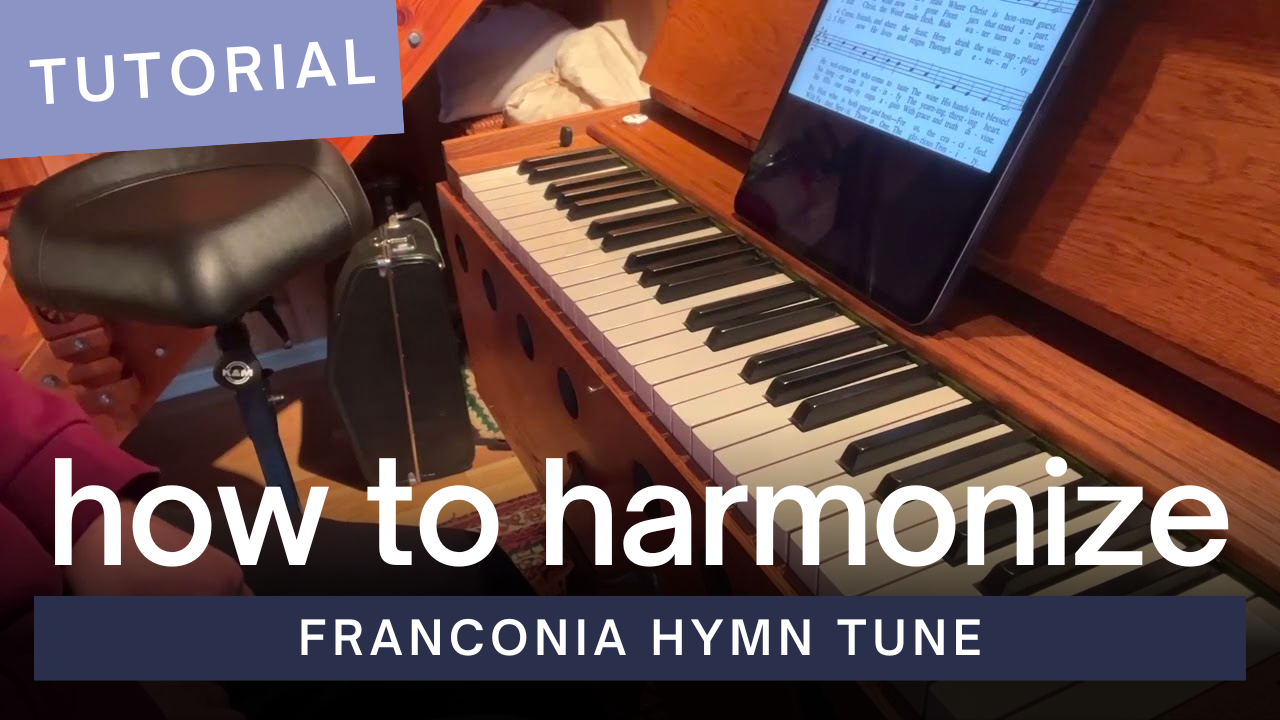
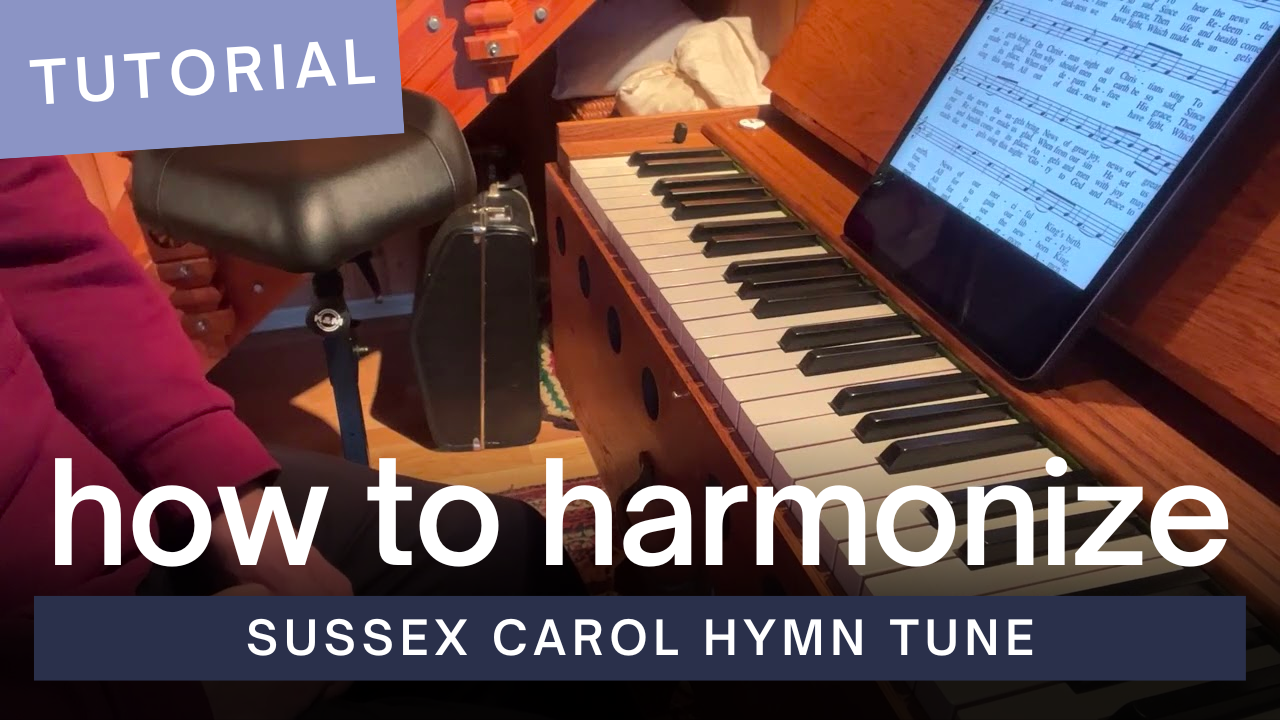
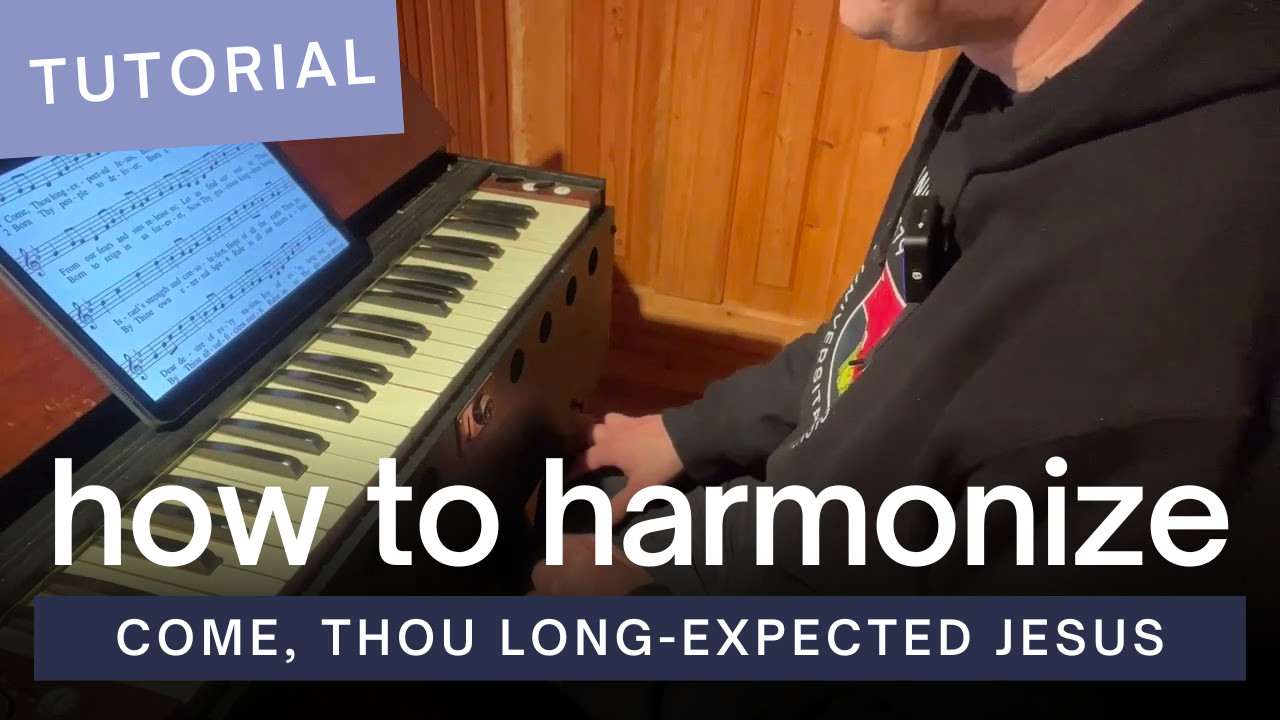
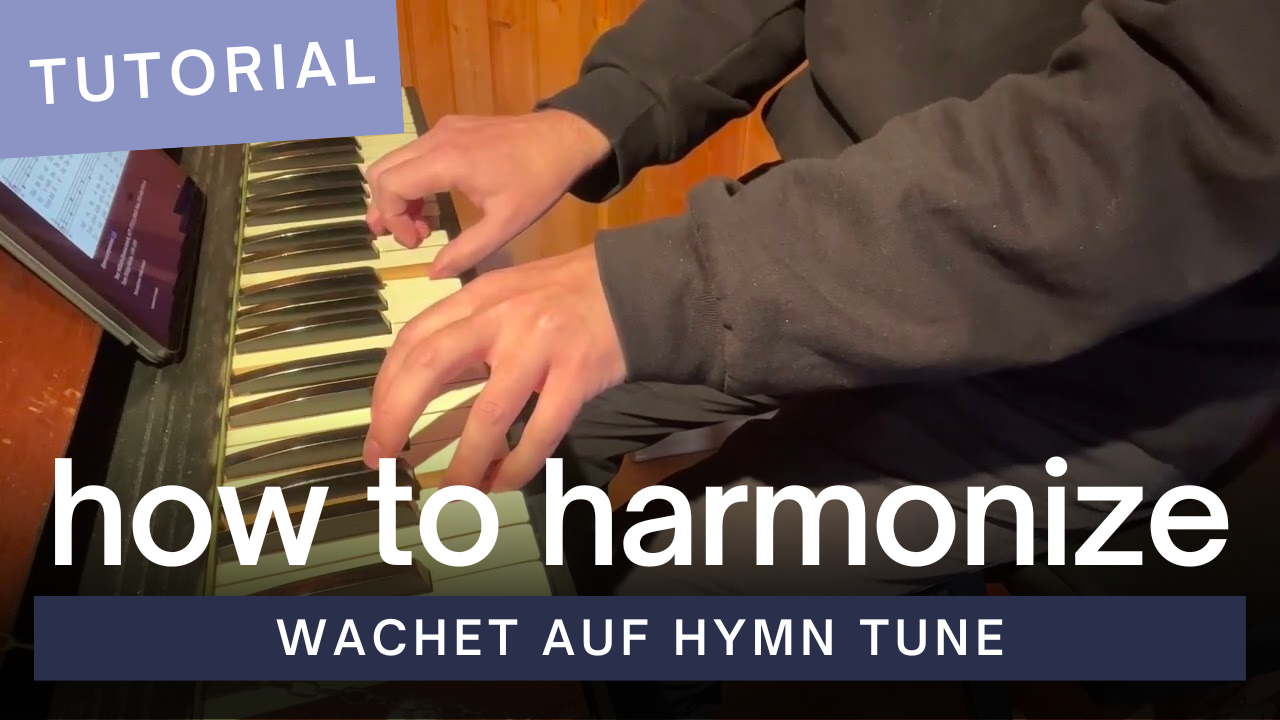
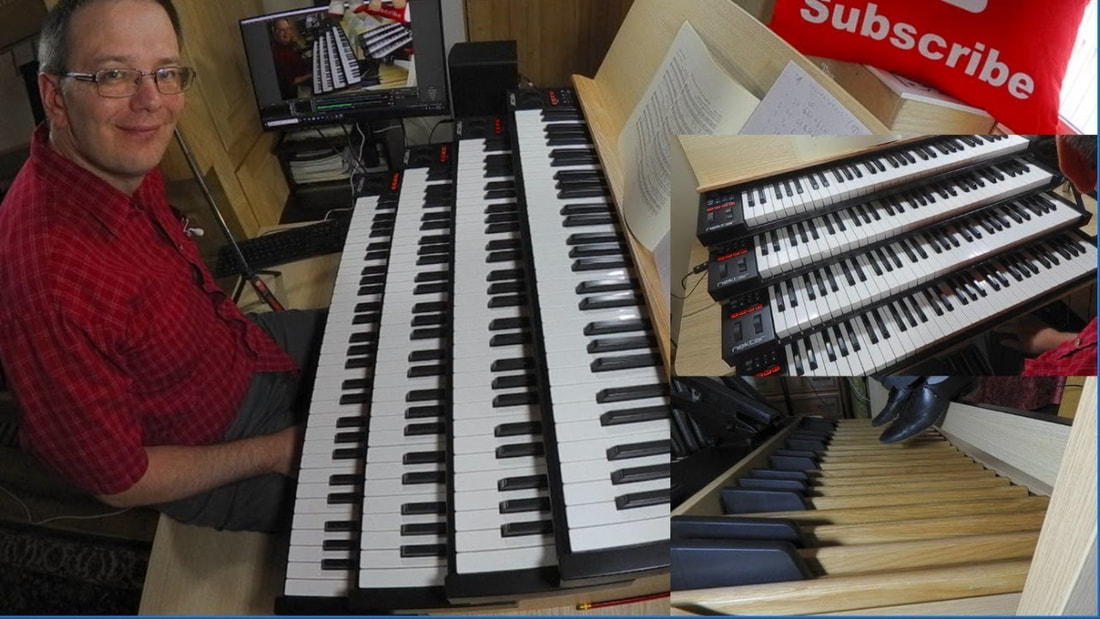
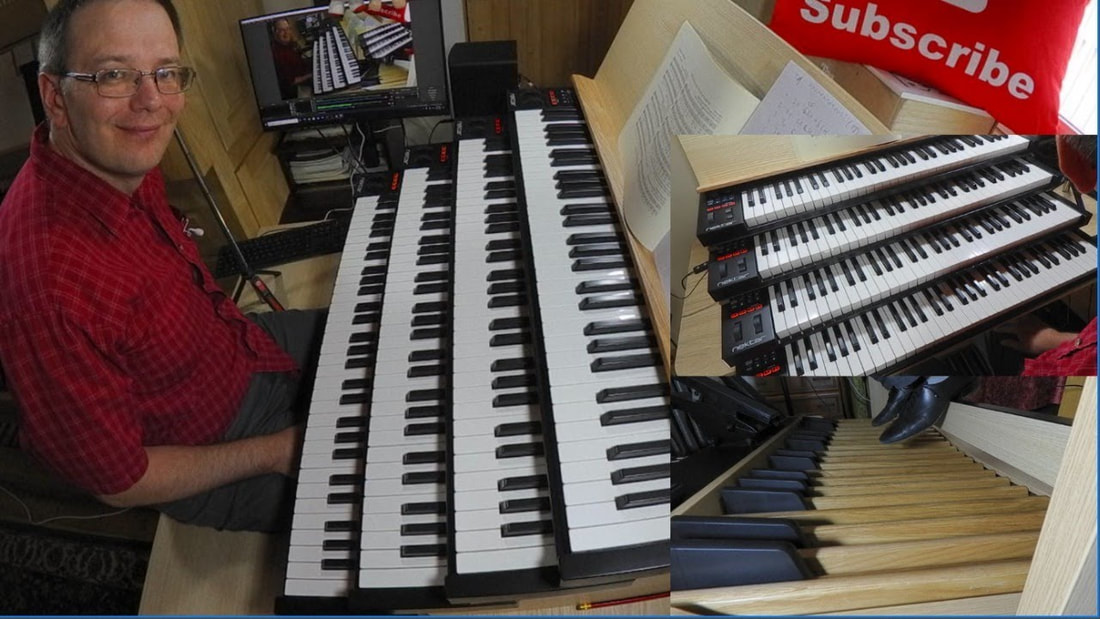
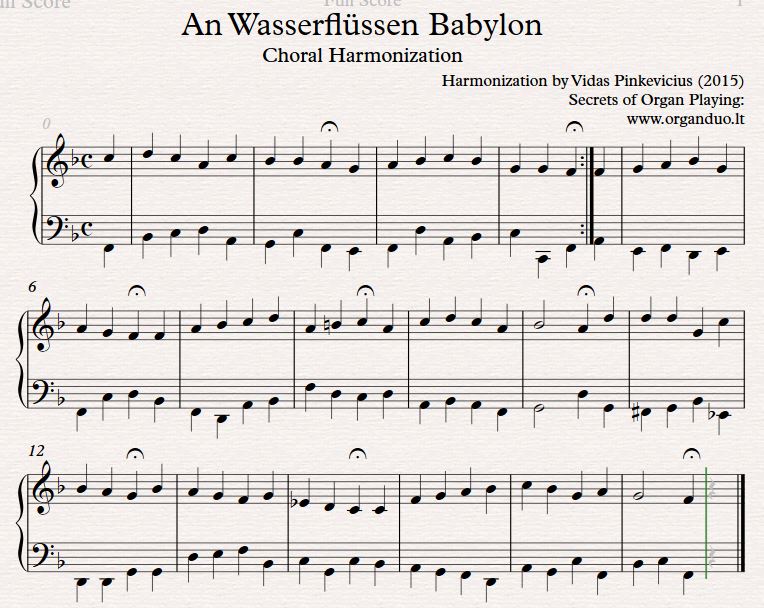



 RSS Feed
RSS Feed